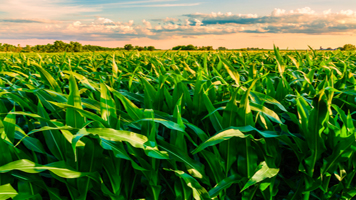Minnesota Farmer Talks AG Climate At Commodity Classic
Category: Grains, Miscellaneous
 (AG Week) – Bill Gordon, a rural Worthington, Minn., farmer serving as treasurer of the American Soybean Association and director for the Minnesota Soybean Growers Association, is in San Antonio this week for the 2017 Commodity Classic. The event is the nation’s largest farmer-led, farmer-focused convention and trade show.
(AG Week) – Bill Gordon, a rural Worthington, Minn., farmer serving as treasurer of the American Soybean Association and director for the Minnesota Soybean Growers Association, is in San Antonio this week for the 2017 Commodity Classic. The event is the nation’s largest farmer-led, farmer-focused convention and trade show.
While in San Antonio, Gordon and fellow ASA leaders are speaking on policy issues ranging from the 2018 Farm Bill and trade to conservation acres and commodity prices. Gordon’s meetings began Tuesday, though the Classic officially started Thursday and continues through Saturday.
The convention also serves as the site of the annual meetings for the nation’s corn, soybean, wheat and sorghum growers, with the American Equipment Manufacturers also joining last year as a way to enhance the trade show.
“It’s open to all farmer-grower leaders,” Gordon said, noting more than 8,000 attendees had already registered by Thursday morning and more were anticipated.
As a representative of the soybean industry, Gordon will participate in the resolutions process, during which members set priorities for lobbying efforts in 2017. He will also be among 180 delegates from across the country’s soybean-producing states to participate in the soy growers’ annual meeting.
A lot of important discussions are taking place at the Commodity Classic, and topping the list is the 2018 Farm Bill and the transition with the Trump administration. Thus far, it’s business as usual with the U.S. Department of Agriculture, the Foreign Agricultural Service and the Farm Service Agency despite not having an agriculture secretary in place.
“Farmers will not see, without a secretary approved, any changes in their payment structure with FSA offices or NRCS stuff — it’s all status quo in D.C.,” Gordon said, adding that policy work is underway in advance of the new agriculture secretary’s appointment.
“We’re ramping up for the 2018 Farm Bill — what programs in the 2014 Farm Bill worked and what didn’t work,” he said. “We have some problems with our cotton seed and our cotton growers — our southern farmers — and we need to know how to help fix that for them. It doesn’t affect Minnesota much, but it does affect our partners.”
With U.S. Rep. Mike Conaway (R-Texas), serving as chairman of the House Committee on Agriculture, cotton and rice will be important focuses in the next farm bill, Gordon said. Another focal point, he added, will be fixing the dairy assurance program from the 2014 bill, which was supposed to help dairy farmers mitigate low prices, but instead has increased their insurance premiums and made it more difficult to collect payouts.
Also being discussed at the Commodity Classic this week is the Conservation Reserve Program.
“We want to increase CRP acres, but we also want to change from a blank, general sign-up to a more targeted approach for water quality and for highly erodible land — to make sure we target all of those lands first before we have just a blank, general sign-up of CRP,” Gordon said. “That resonates good with Minnesota with the buffer law in limbo. Riparian buffers are really important.”
With Trump’s decision to withdraw from the Trans-Pacific Partnership, Gordon said trade is also one of the top topics of discussion.
“Where are we going next? Who do we need to be in place to make sure trade agreements continue?” he asked. “We’re going to do unilateral trade agreements instead of bilateral trade agreements. How does that change how we, as soybean farmers, go about going overseas and getting markets set up? Those are all the things getting discussed at all of these meetings here — and any other regulations that come up.”
The decisions made in Washington about trade and agriculture impact the crop and livestock producers in rural America who are already battling low commodity prices.
“That is why trade is such an important part,” Gordon said. “We’re trying to figure out how we move forward to increase our market share in the world market — how to help our domestic livestock keep thriving with those markets. Helping our chickens, pigs, cattle and dairy (producers) access markets worldwide increases our feed consumption.
“We’re producing record amounts of corn, soybeans and wheat in the country and we’re really good at it, but by doing that, that reduces demand because you have such a high carryover,” he added. “We need trade as a tool. We need our domestic livestock production as a tool, we need our ethanol and our soybean oil biodiesel markets as a tool. They all add to the profitability of farmers in rural America.”
Gordon said he is joined by thousands of men and women at the Commodity Classic who represent rural America, and their economic viability “truly is the determining factor whether rural America survives or doesn’t.”
“Sometimes I think people forget about that agriculture community and how much money they generate into that rural economy,” he said. “They forget about that farmer, and when markets are low and economics are tighter, how rural America will suffer.”




